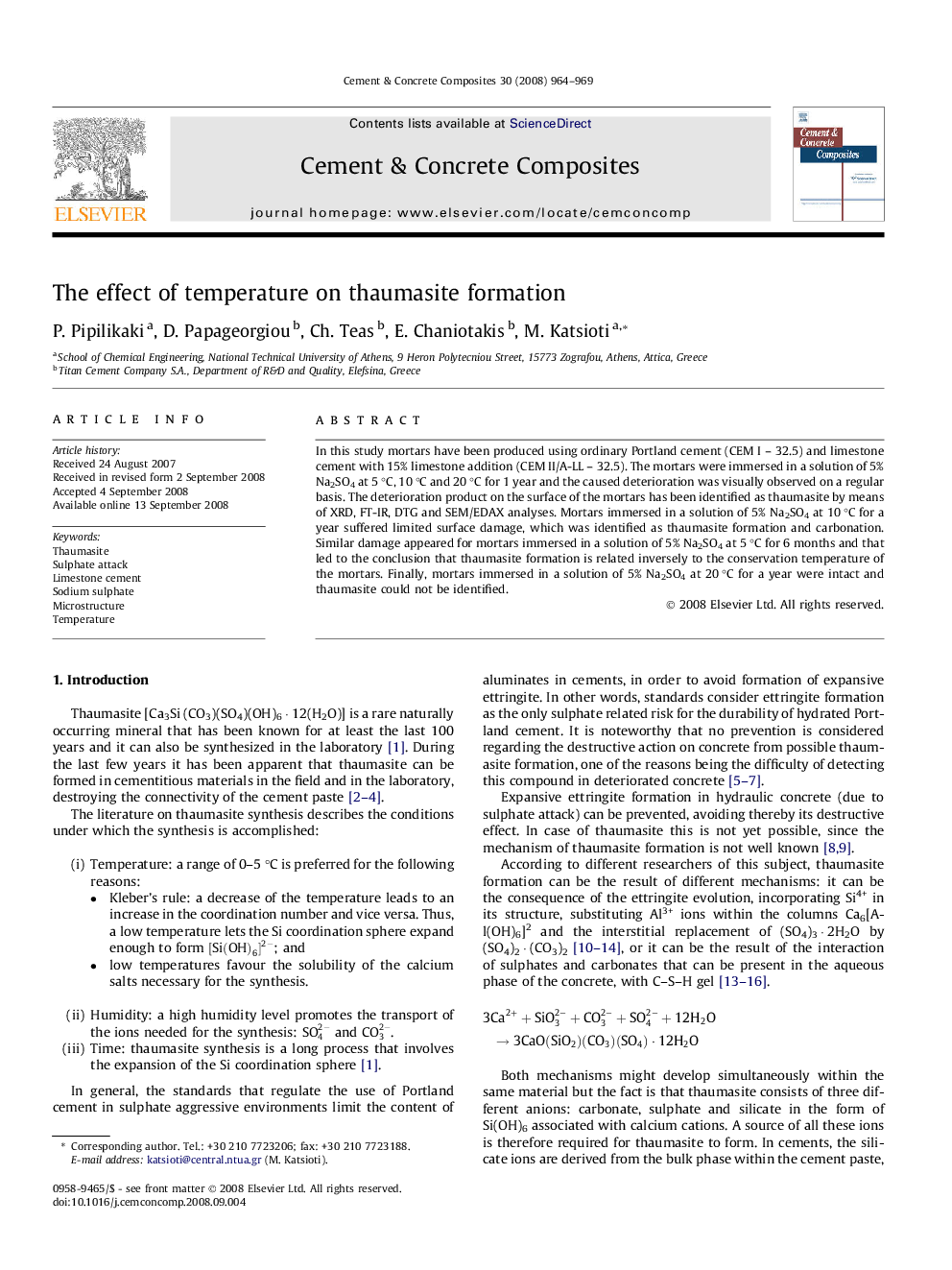| Article ID | Journal | Published Year | Pages | File Type |
|---|---|---|---|---|
| 1455465 | Cement and Concrete Composites | 2008 | 6 Pages |
In this study mortars have been produced using ordinary Portland cement (CEM I – 32.5) and limestone cement with 15% limestone addition (CEM II/A-LL – 32.5). The mortars were immersed in a solution of 5% Na2SO4 at 5 °C, 10 °C and 20 °C for 1 year and the caused deterioration was visually observed on a regular basis. The deterioration product on the surface of the mortars has been identified as thaumasite by means of XRD, FT-IR, DTG and SEM/EDAX analyses. Mortars immersed in a solution of 5% Na2SO4 at 10 °C for a year suffered limited surface damage, which was identified as thaumasite formation and carbonation. Similar damage appeared for mortars immersed in a solution of 5% Na2SO4 at 5 °C for 6 months and that led to the conclusion that thaumasite formation is related inversely to the conservation temperature of the mortars. Finally, mortars immersed in a solution of 5% Na2SO4 at 20 °C for a year were intact and thaumasite could not be identified.
